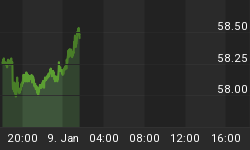Increased demand, combined with low interest rates and a major semiconductor shortage, has caused prices of both new and used cars to skyrocket to the point that you might end up paying a new car price for its used counterpart.
The price change is particularly noticeable with used cars that have suddenly gone from depreciation to appreciation.
The Associated Press (AP) reported that one two-year-old Toyota model with a $29,000 sticker price now goes for more than $33,000. Even dealers are willing to pay almost $1,000 more than sticker price just to get their hands on more inventory.
According to CarGurus, values have gone up 30% on average compared to the last year, and 17% just since January this year.
CarGurus' data shows that 11 brands have seen used car prices go up more than 30%, year over year. The list is led by Ram whose used vehicles are 40.5% more expensive than last year, followed by Aston Martin, Ford, GMC, Chevrolet, Dodge and VW--all up between 35% and 38%.
Last year, the pandemic caused auto manufacturers to suspend operations, with everybody predicting a slowdown in car sales to last. However, new car sales picked up in a hurry, causing a growing shortage of semiconductors, a key component of many computerized electronics.
As a result, new-vehicle inventory was down 25% compared with this same time last year. Experts are now warning that unless the semiconductor shortage improves, inventory could be down by as much as 40%.
The global semiconductor shortage has disrupted auto production in the United States and elsewhere, and will most likely last two more years.
The semiconductor shortage has affected nearly every industry, but U.S. automakers have been especially hit hard, with some forced to slow or halt production at plants.
Last year, the pandemic caused auto manufacturers to suspend operations, with everybody predicting a slowdown in car sales to last but new car sales picked up in a hurry, causing a growing shortage of semiconductors.
As the chip shortage worsens, the prices of new vehicles will likely keep climbing.
According to Edmunds, 13% of those who bought a new car in the U.S. in the last month paid above sticker price, compared to 8% in April.
Another factor driving the price increases is that Americans have more money to spend than last year, either because of government’s stimulus payments, less travel, less commuting or perhaps even profits from retail investing. Extremely low-interest rates on a car loan are making purchases quite appealing on top of that.
In all, Americans now have extra $2.4 trillion in savings compared with a year ago.
However, car theft is also increasing along with this auto-buying binge. According to National Insurance Crime Bureau data, car thefts jumped 9.2% last year from 2019 to 873,000, the highest number in more than a decade.

















